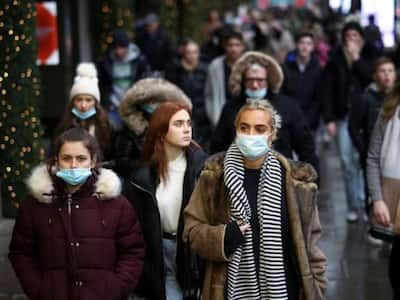Respiratory Risks Rise In Minnesota Amidst Canadian Wildfire Smoke

Table of Contents
The devastating Canadian wildfires are raging, sending plumes of thick, hazardous smoke southward. Minnesota is experiencing a significant decline in air quality, posing serious respiratory risks to its residents. This article explores the current situation, the associated health dangers, and crucial steps Minnesotans can take to safeguard their well-being.
Understanding the Health Impacts of Wildfire Smoke
Wildfire smoke isn't just hazy; it's a complex mixture of harmful pollutants that directly impact respiratory and cardiovascular health. Breathing this air can significantly worsen existing conditions and trigger new ones.
Respiratory Illnesses Exacerbated by Smoke
Exposure to wildfire smoke drastically increases the risk of various respiratory problems. Even healthy individuals can experience discomfort, while those with pre-existing conditions face a much higher risk of serious complications.
- Asthma Attacks: Smoke irritates the airways, triggering severe asthma attacks requiring urgent medical attention.
- Bronchitis: Inflammation of the bronchial tubes, leading to coughing, wheezing, and shortness of breath.
- Pneumonia: A lung infection potentially caused or worsened by inhaling smoke particles.
- Increased ER Visits: Hospitals across Minnesota are reporting a noticeable surge in emergency room visits related to respiratory issues linked to wildfire smoke. Children, the elderly, and individuals with chronic respiratory diseases like COPD and emphysema are particularly vulnerable.
Cardiovascular Impacts
The health consequences extend beyond the lungs. Wildfire smoke contains fine particulate matter (PM2.5) that can enter the bloodstream, impacting heart health.
- Heart Attacks: Studies have linked exposure to wildfire smoke to an increased risk of heart attacks and strokes.
- Irregular Heartbeat: Smoke inhalation can disrupt the heart's rhythm, leading to potentially dangerous arrhythmias.
- Aggravation of Existing Conditions: Individuals with heart disease are at a significantly higher risk of experiencing severe complications.
Eye and Skin Irritation
Wildfire smoke doesn't just affect your lungs; it can also irritate your eyes and skin.
- Eye Irritation: Burning, itching, watery eyes, and even temporary vision impairment are common.
- Skin Irritation: Dryness, redness, and rashes can develop due to exposure to smoke particles.
- Preventative Measures: Wearing protective eyewear and applying moisturizer can help reduce irritation.
Current Air Quality in Minnesota and Forecasts
Staying informed about current and predicted air quality is paramount to protecting your health.
Monitoring Air Quality Indices (AQI)
The Air Quality Index (AQI) measures the concentration of various pollutants in the air. The higher the AQI, the greater the health risk.
- Interpreting the AQI: The Minnesota Pollution Control Agency (MPCA) website ([link to MPCA website]) provides up-to-date AQI readings for different regions in Minnesota. Learn what each AQI level means and understand the associated health risks.
- Staying Indoors: When the AQI is high (above 100), it's crucial to limit time spent outdoors.
Predicting Future Smoke Conditions
Predicting smoke levels accurately can be challenging, but various resources provide forecasts.
- Weather Forecasts: Pay close attention to weather reports, as they often include information on air quality and smoke forecasts.
- Air Quality Forecasts: Refer to the MPCA website and other reliable sources for specific air quality predictions.
- Regular Updates: Check air quality forecasts frequently, as conditions can change rapidly.
Protecting Yourself and Your Family from Wildfire Smoke
Taking proactive steps is vital to minimizing your exposure to harmful wildfire smoke.
Staying Indoors When Air Quality is Poor
When the AQI is high, staying indoors is the best way to protect yourself.
- Seal Your Home: Close windows and doors, and use air conditioning if available.
- Air Purifiers: Consider using a HEPA air purifier to filter out harmful particles.
- Indoor Activities: Engage in indoor activities to minimize time spent outside.
Using Masks and Respirators
Wearing a proper mask can significantly reduce your inhalation of harmful particles.
- N95 Masks: N95 respirators are the most effective at filtering out fine particulate matter. Ensure a proper fit for maximum protection.
- Surgical Masks: While less effective than N95s, surgical masks still offer some protection.
- Proper Usage: Learn how to properly wear and dispose of masks to maximize their effectiveness.
Staying Hydrated
Hydration is crucial to help your body flush out toxins.
- Drink Plenty of Fluids: Drink plenty of water, juice, or other hydrating beverages.
- Benefits of Hydration: Staying hydrated helps your body cope with the stress of smoke inhalation.
Conclusion
The influx of Canadian wildfire smoke presents significant respiratory risks to Minnesotans. Understanding the health impacts, monitoring the AQI, and implementing protective measures are essential for safeguarding your well-being. Regularly check the AQI and utilize the protective strategies outlined in this article to mitigate your exposure to wildfire smoke. Protect yourself and your loved ones – your respiratory health depends on it.

Featured Posts
-
 Ex Nypd Commissioner Kerik Hospitalized Full Recovery Expected
May 31, 2025
Ex Nypd Commissioner Kerik Hospitalized Full Recovery Expected
May 31, 2025 -
 Elon Musk Under Pressure Analyzing His Recent Decisions And Their Impact
May 31, 2025
Elon Musk Under Pressure Analyzing His Recent Decisions And Their Impact
May 31, 2025 -
 Ai La Sophia Huynh Tran Nu Tay Vot Pickleball Tai Nang
May 31, 2025
Ai La Sophia Huynh Tran Nu Tay Vot Pickleball Tai Nang
May 31, 2025 -
 Understanding The Jn 1 Covid 19 Variant Symptoms And Prevention In India
May 31, 2025
Understanding The Jn 1 Covid 19 Variant Symptoms And Prevention In India
May 31, 2025 -
 Suge Knight Wants Diddy To Testify A Plea For Humanization
May 31, 2025
Suge Knight Wants Diddy To Testify A Plea For Humanization
May 31, 2025
